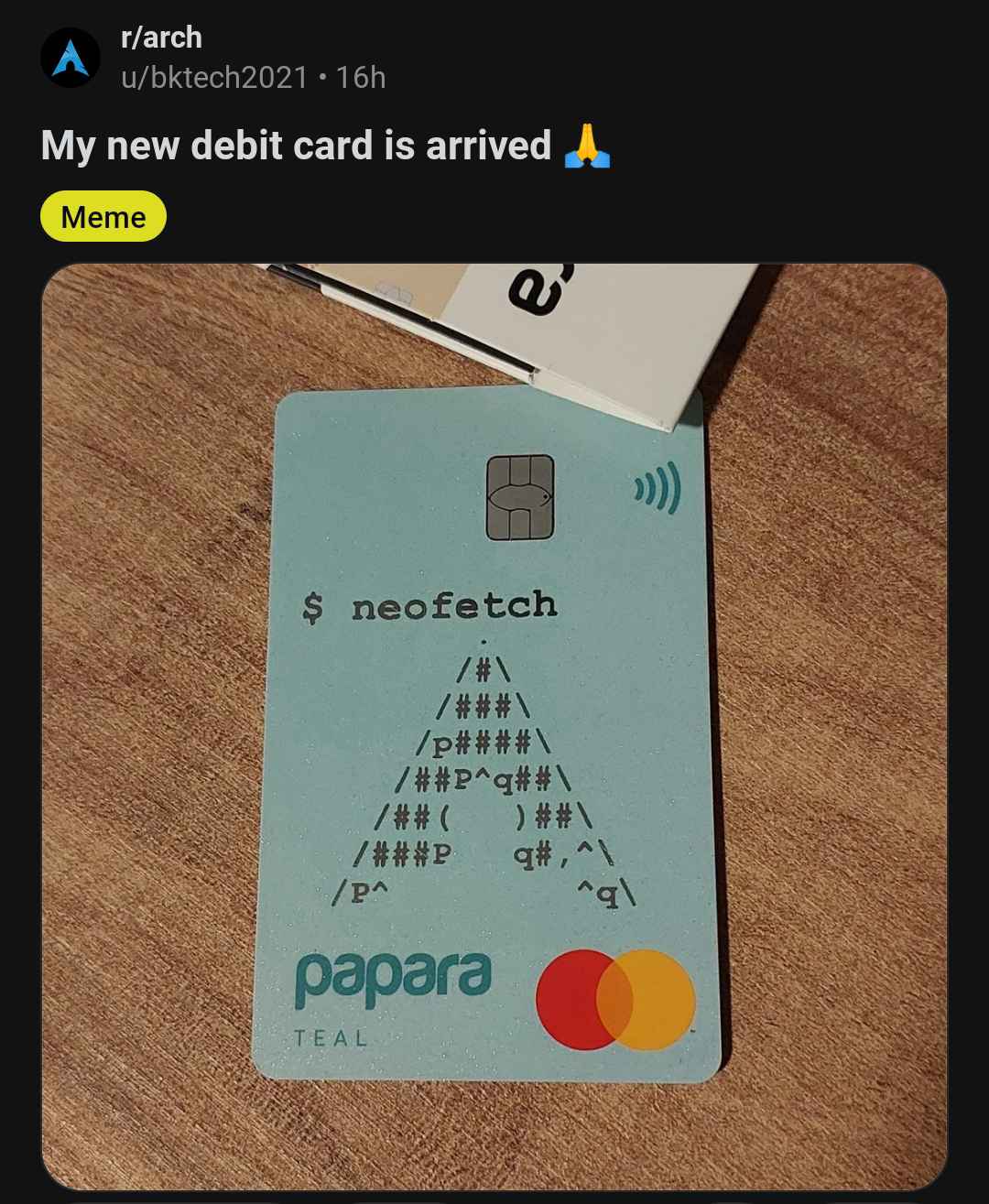this post was submitted on 03 Nov 2024
682 points (97.1% liked)
linuxmemes
28570 readers
1152 users here now
Hint: :q!
Sister communities:
Community rules (click to expand)
1. Follow the site-wide rules
- Instance-wide TOS: https://legal.lemmy.world/tos/
- Lemmy code of conduct: https://join-lemmy.org/docs/code_of_conduct.html
2. Be civil
- Understand the difference between a joke and an insult.
- Do not harrass or attack users for any reason. This includes using blanket terms, like "every user of thing".
- Don't get baited into back-and-forth insults. We are not animals.
- Leave remarks of "peasantry" to the PCMR community. If you dislike an OS/service/application, attack the thing you dislike, not the individuals who use it. Some people may not have a choice.
- Bigotry will not be tolerated.
3. Post Linux-related content
- Including Unix and BSD.
- Non-Linux content is acceptable as long as it makes a reference to Linux. For example, the poorly made mockery of
sudoin Windows. - No porn, no politics, no trolling or ragebaiting.
- Don't come looking for advice, this is not the right community.
4. No recent reposts
- Everybody uses Arch btw, can't quit Vim, <loves/tolerates/hates> systemd, and wants to interject for a moment. You can stop now.
5. 🇬🇧 Language/язык/Sprache
- This is primarily an English-speaking community. 🇬🇧🇦🇺🇺🇸
- Comments written in other languages are allowed.
- The substance of a post should be comprehensible for people who only speak English.
- Titles and post bodies written in other languages will be allowed, but only as long as the above rule is observed.
6. (NEW!) Regarding public figures
We all have our opinions, and certain public figures can be divisive. Keep in mind that this is a community for memes and light-hearted fun, not for airing grievances or leveling accusations. - Keep discussions polite and free of disparagement.
- We are never in possession of all of the facts. Defamatory comments will not be tolerated.
- Discussions that get too heated will be locked and offending comments removed.
Please report posts and comments that break these rules!
Important: never execute code or follow advice that you don't understand or can't verify, especially here. The word of the day is credibility. This is a meme community -- even the most helpful comments might just be shitposts that can damage your system. Be aware, be smart, don't remove France.
founded 2 years ago
MODERATORS
you are viewing a single comment's thread
view the rest of the comments
view the rest of the comments

Absolutely spot on, thank you - always handy to know.
I'm wondering what it does to mitigate the "card not present" fraud though, for online purchases or remote purchases?
In my case, I have to verify online purchases on my bank's app. Which makes online banking impossible without an android or apple phone.
As far as I understand it the pin&chip system involves a challenge/response between the bank and the card. You can't just "clone" the chip, because the secret data it contains is essentially write-only.
Sorry, maybe I wasn't clear.
I'm assuming the 16 digit card number, start and expiry dates, and CVV are printed on the reverse - whereas it used to only have the CVV on the reverse and the rest of the details on the front.
What's stopping someone with a picture of the rear of the card visiting an online retailer and going wild with a picture of just one side of the card these days - aside from multi-factor authentication at the point of authorising the payment?
Oh! In that case: absolutely nothing. Credit cards are terrifyingly insecure. Whether or not the info is on two sides or one. Any webshop you use your credit card at can just arbitrarily charge it from then on if they feel like it.
The CVV should really be 2FA from your card issuer.
Most card allow you to set that transactions have to be approved either by app or by SMS.
I just replied this to the parent comment.
There’s additional tools for e-commerce transactions like 3DSecure (step up authentication like an OTP) and passive identity verification tools.